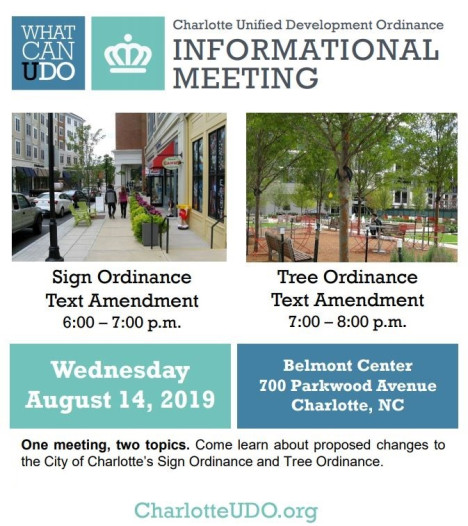Posted on October 22, 2019
Last night (10/21) Charlotte City Council voted to approve updates to the sign and tree ordinances. NAIOP Charlotte supported the proposed text amendments to the Tree Ordinance below:
On behalf of the hundreds of commercial real estate developers and industry service providers represented by NAIOP Charlotte, we request your support of the proposed amendment to the City’s Tree Ordinance Amendment at the City Council business meeting on Monday, October 21st.
Petition #2019‐104 seeks to codify flexibility, better integrate trees into urban sites, and will result in no net loss of ordinance required trees. It incentivizes urban development and redevelopment to plant trees on site, compared with the current practice of payment in lieu which pushes our canopy out of urban areas where benefits from sustainable practices can be leveraged. It places trees in areas where people want to congregate, socialize, and enjoy open space. Current requirements are restrictive of where trees can be located.








 Shared parking paired with technology offers solutions for changes in building usage.
Shared parking paired with technology offers solutions for changes in building usage. Despite the ongoing stalemate over the state budget, legislation supported by the real estate and home building industry continues to make progress in Raleigh. Over the past few weeks, Governor Cooper has signed into law a variety of bills supported by the North Carolina Home Builders Association (NCHBA), the North Carolina Realtors®, NAIOP North Carolina, and other trade groups. Here’s a summary of some of the key laws that will benefit the residential and commercial real estate industries in the years ahead:
Despite the ongoing stalemate over the state budget, legislation supported by the real estate and home building industry continues to make progress in Raleigh. Over the past few weeks, Governor Cooper has signed into law a variety of bills supported by the North Carolina Home Builders Association (NCHBA), the North Carolina Realtors®, NAIOP North Carolina, and other trade groups. Here’s a summary of some of the key laws that will benefit the residential and commercial real estate industries in the years ahead: